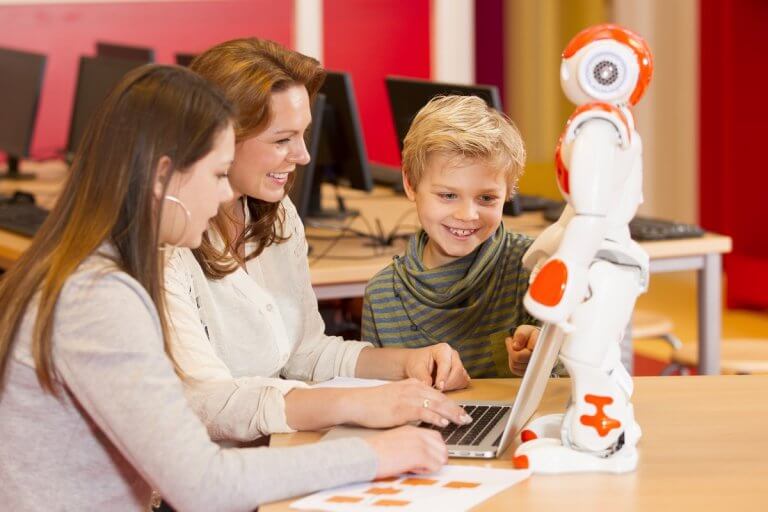
Is the use of robots in the classroom the future of K12 education?
It appears it might be. Automation isn’t set to replace teachers anytime soon and the use of robots in the classroom may still be in its infancy, but there are already examples of how they are being used. To boot, early testing suggests robots can help facilitate students’ learning.
For example, according to reports, Japan plans to use English-speaking robots in some 500 Japanese classrooms this year to improve the English skills among both children and teachers in a pilot project.
But more than a cool way of using artificial intelligence (AI) to teach students, the use of robots also presents a myriad of opportunities just waiting to be explored.
Here are some nifty ways robots are helping young students:
Kaspar
Meet Kaspar the robot: he’s helping children with autism communicate http://t.co/a2SnEpycq2 pic.twitter.com/K9oT683Y2v
— Guardian Education (@GuardianEdu) April 15, 2015
Kaspar, a child-sized humanoid robot, may look like a toy, but it is, in fact, an aid to help improve the lives of children with autism and other communication difficulties.
Kaspar was developed by the University of Hertfordshire’s Adaptive Systems Research Group and “helps teachers and parents support children with autism to overcome the challenges they face in socialising and communicating with others”.
“Most of the research with Kaspar has taken place in schools, nurseries of specialist early learning centres around the UK,” notes the university.
Kaspar can be programmed to hold conversations with children, has been made small to avoid intimidating its target audience and has minimal facial expressions to avoid overwhelming autistic children and help them interpret the robot’s expressions, notes ABC News.
NAO Robot
English Curriculum with Nao Robot https://t.co/8L6rooxrRs
— Paul Collins (@PaulCollo) May 3, 2019
NAO Robot is a 58 cm-tall robot from Softbank Robotics that has been used to help toddlers pick up a second language.
NAO was used in a European research project called L2TOR (pronounced “el tutor”) whose goal was to teach young Dutch-speaking children a second language – i.e. English – using social robots. While the project ran from Jan 1, 2016 to Dec 31, 2018, the study revealed that children can successfully learn from a robot.
Tega
Social Companion #Robot, #Tega, Aids Children’s Development #CriticalThinking #DNG #Dubai #Dubainewsgate #Learning #MITScientist #Reasoning #Robotics #Robots #Technology #UAE https://t.co/LYrwFkCnHR pic.twitter.com/2RMEBU0XJH
— Dubai News Gate (@dubainewsgate) February 21, 2019
Tega, MIT’s Personal Robots Group’s social robot, resembles a soft toy and acts as a learning companion for children that is also being used to help children pick up a second language.
This fluffy robot has a range of physical expressions, moves and helps engage children in educational activities as a peer.
According to MIT’s report, the researchers found that over a duration of two months, the robot has helped children learn new words from the repeated tutoring sessions; the effective policy personalised to students over the duration of the study; and students who interacted with a robot that personalised its affective feedback strategy showed a significant increase in valence, as compared to students who interacted with a non-personalising robot.
Liked this? Then you’ll love…
How is Robots4Autism improving students’ social skills?
3 ways teachers are integrating robotics and coding into the classroom







